
Engelmann & J. M. Bigelow, Proceedings of the American Academy of Arts and Sciences 3: 295, 1856
Herbarium; Herbarium; Herbarium; Herbarium;Herbarium; Herbarium; Herbarium; Herbarium; Herbarium; Herbarium; Herbarium; Herbarium; Herbarium; Herbarium; Drawing (Bigelow, J.M., The Botany of the Expedition, 1856, plate XII No. 1-3)
O. cymochila can be confused with O. polyacantha
O. cymochila can be confused with O. tortispina
Original Description
What is Opuntia cymochila?
Opuntia cymochila is a small prickly pear cactus that was originally described from near Tucumcari, New Mexico. It is the dominant grassland species of Opuntia on the Great Plains that has juicy fruit. A few specimens have even been found in Ontario, Canada, where they may represent naturalized plants.
Details
In many areas, the pads are 6-10 cm long. However, pads are larger in plants from western Kansas, and adjacent areas as well as in the drainage of the Rio Grand River. There are several spines per areole over much of the pad or just the upper half. Sometimes spines are sparse. There are 1-4(5) central spines that often spread downward, but 1 or 2 may be erect or even point upwards. There may be several radials that point downwards. Spines are often pale but may have brown bases, but in some areas, spines are dark (e.g., in parts of the Rio Grande drainage). The pads shrivel horizontally in drought and in winter leaving creases on second-year pads.
Flowers of this Opuntia are 6-8 cm inches across with many ruffled petals. The flowers are typically yellow, but tepals may darken towards their bases—seldom producing red centers. Flowers may rarely be pink or magenta. The style is pale and the stigma is often medium- or dark green, but pale stigma lobes may occur. Fruit is ovoid or ellipsoid but narrows towards the apex making an acute rim. Fruit areoles are prominent with obvious glochids and perhaps a few smallish spines. The dull purplish-red fruits are juicy and sweet but mostly filled with seeds. The seeds are large, perhaps 6 mm across, irregularly discoid and with a broad obvious rim.
O. cymochila is hexaploid.
Other Notes
Though widespread in grasslands, O. polyacantha is more widespread. Also, O. polyacantha has fruit that is dry at maturity. Quite spiny plants of O. cymochila can be misidentified as O. polyacantha, but O. cymochila has juicy fruits and a different spine arrangement upon close examination.
The synonym oplocarpa was used for O. cymochila from Golden, Colorado, and the synonym fusiformis was used for plants from eastern Kansas and Fort Smith, Arkansas. This prickly pear also occurs in Wyoming; the Dakotas and various Midwestern states; northern, central, and western Texas; New Mexico; and southeastern Utah. Britton and Rose reported that this Opuntia was found from Wisconsin to South Dakota and south to Kansas, Colorado, Texas, and New Mexico. The range of this Opuntia in Mexico is unclear.
O. cymochila can be confused with O. tortispina. See a table comparing O. cymochila with O. tortispina. Generally speaking, O. cymochila has more areoles; shorter, more slender and fewer centrals; more small lower radial spines; and shrivels to the point of creasing in winter dormancy (leaving permanent marks on the older pads). On average O. cymochila runs smaller, but the overall size range for both species is variable.

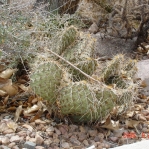
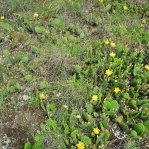
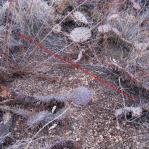
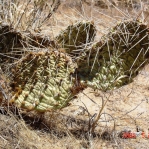
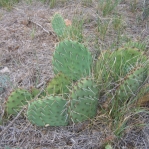
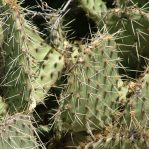
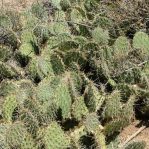
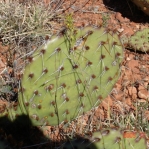
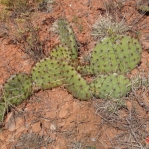
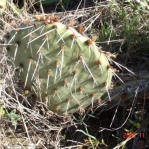
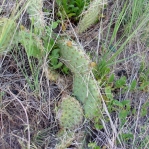
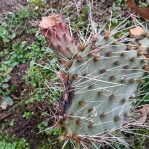
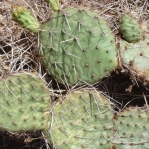
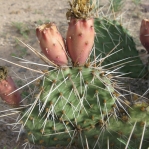
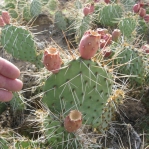
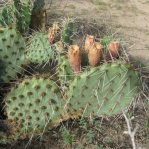
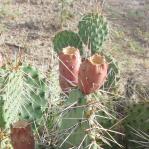
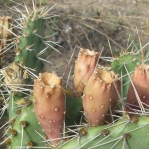
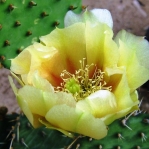
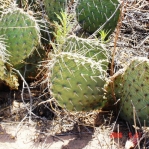
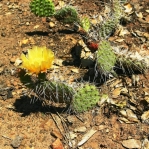
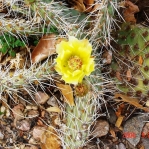
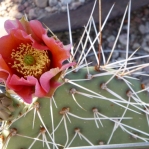
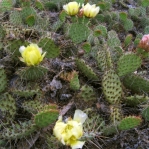
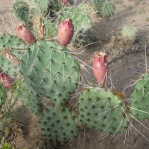
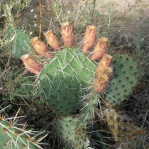
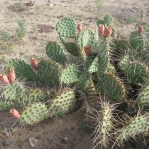
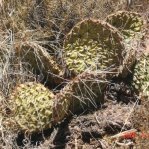
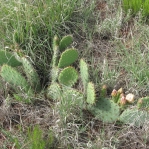
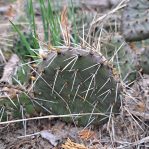
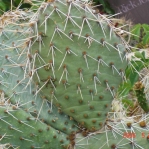
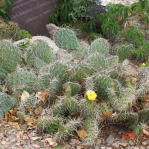
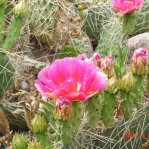
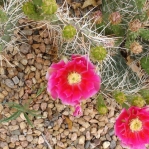
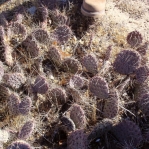
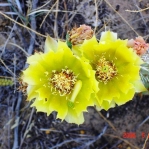
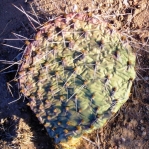
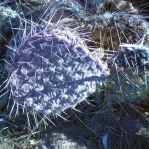
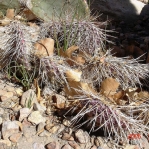
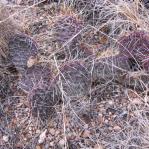
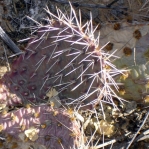
Thank you very much. I take it-the needles are different-and sometimes the pad-in different locations. I have a very long needle one-scroungy looking-and in new soil this year-still pretty scroungy!! Mine is in a pot in Ga.
Hi Gerry,
You are right. The spines can be different from one situation to another. Though different they are still arranged in the same patterns, etc. But, they may be longer, thinnner, differently colored, or even missing. Extra water or extra drought makes a different, as do sunshine and shade.
Joe